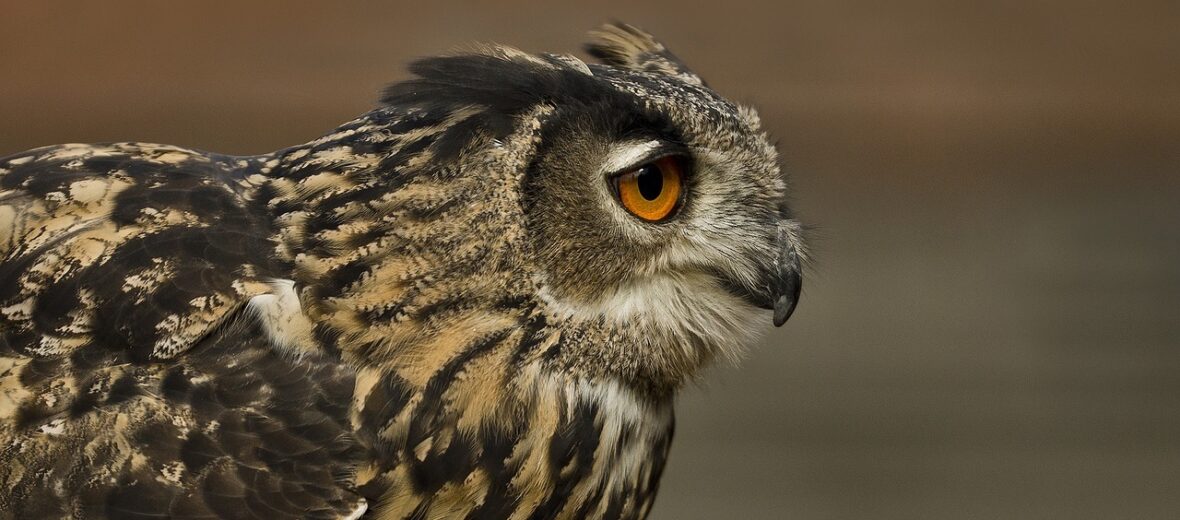
Being among one of the world’s largest owls, the Eurasian eagle-owl is found throughout most of Europe, Asia, and portions of northern Africa. These owls prefer rocky outcrops and cliffs. However, they can also be found in open habitats with trees and rocky caves. For instance: farmlands, grasslands, semi-arid areas, steppes, and taiga. Due to their large distribution and strong numbers, albeit decreasing, they are listed as Least Concern by the IUCN.
First the Stats…
Scientific name: Bubo bubo
Weight: Up to 5.9 lbs.
Length: Up to 2.3 feet
Wingspan: Up to 6.2 feet
Lifespan: Up to 60 years
Now on to the Facts!
1.) Eurasian eagle-owls are nocturnal (active at night) with occasional crepuscular (active at dawn and dusk) habits.
2.) They use powerful and quick flights combined with shallow wing beats and long glides, as well as updrafts to quietly sneak up on unsuspecting prey. Like other owls, the feather tips are frayed to silence their wing beats.
3.) Eagle-owls prey on mice, rats, rabbits, reptiles, amphibians, fish, large insects, and other birds.
4.) Their only predators are when they are eggs or fledglings. They come in the form of other birds of prey, foxes, and raccoons.
5.) These owls are monogamous (mate for life). Even though they mate for life, they still ensure pair bonding by performing mating rituals each breeding season.
But wait, there’s more on the Eurasian eagle-owl!
6.) Courtship involves “duetting”, with the male sitting upright as the female bows and calls.
7.) Their deep resonant “ooh-hu” call is made by the male, and a more high-pitched and drawn-out “uh-hu” for the female can be heard at great distances, on quiet nights.
Did you know…?
In the U.S., The Migratory Bird Treaty Act strictly prohibits filmmakers from using native birds, like the great horned owl. Therefore, most times, you will see the Eurasian eagle-owl used as a substitute. Since they look similar to the untrained eye.
8.) Females lay up to 4 eggs, each season.
9.) Eagle-owls are very sedentary and typically maintain a single territory throughout their entire lives.
10.) Owlets, also called “branchers”, learn to walk first and leave the nest before they can fly.
Now a Short Eurasian Eagle-Owl Video!
Also, check out the Critter Science YouTube channel. Videos added frequently!
Want to suggest a critter for me to write about? Let me know here.



